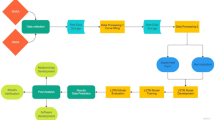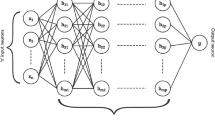Abstract
Recent advances in neural networks algorithm solve many complex problems in real world. Neural networks were applied to many non-linear prediction domains such as speech recognition, computer vision, machine learning and other areas. One of such challenging phenomena is applying neural networks to weather predictions and climate modelling. Because of its large size and complex data, it is difficult to predict. In this research work, climate factors were taken to make predictions using novel tollgate neural networks (TNN) algorithm. TNN algorithm is projected with quick training methodology rather than conventional approach. The advantage of this versatile model is that it can successfully incorporate the useful features by pruning the unnecessary data during training. Therefore it is intriguing algorithm to approach climatic patterns to predict certain notable variations in the area under study. Experimental results proclaim that this framework of the algorithm is efficient, adaptable and outperforms popular methods when tested on different climatic patterns. It also helps to form an proficient learning and optimisation platform for other large scale complex problems.









Similar content being viewed by others
References
Adya M, Collopy F (1998) How effective are neural networks at forecasting and prediction? A review and evaluation. J For 17:481–495
Amanpreet Kaur JK, Sharma, Agrawal S (2011) Artificial neural networks in forecasting maximum and minimum relative humidity. Int J Comput Sci Netw Sec 11(5):197–199
Carpenter GA, Grossberg S (1987) A massively parallel architecture for a self organising neural pattern recognition machine. Comput Vis Graph Image Process 37:54–115
Carpenter GA, Stephen G (1988) The ART of adaptive pattern recognition by a self organizing neural network. Computer 21:77–88
Chattopadhyay S (2006) Multilayered feed forward artificial neural network model to predict the average summer-monsoon rainfall in india. Master’s thesis, Department of Mathematics, Techno Model SchoolTechno India Group, EM-4/1, Sector V, Salt Lake, Kolkata 700 091, India
Guhathakurta P (2000) New models for long range forecasts of summer monsoon rainfall over North West and Peninsular India. Meteor Atomos Phys 73(3):211–255
Hall T, Brooks HE, Doswell CA III (1999) Precipitation forecasting using a neural network. AMS J 14(3):338–345
Hayati M, Mohebi Z (2007) Application of artificial neural networks for temperatureforecasting. World Acad Sci Eng Technol 28:275–279
Heisenberg W (1977) Remarks on the origin of the relations of uncertainty. In: Price W, Chissick S (eds) The uncertainty principle and foundations of quantum mechanics. A fifty years’ survey. Wiley, London, pp 3–6
Hung NQ, Babel MS, Weesakul S, Tripathi NK (2009) An artifcial neural network model for rainfall forecasting in bangkok, Thailand. Hydrol Earth Syst Sci 13(8):1413–1425
Jignesh J, Patel VM (2011) Rainfall—runoff modeling using artificial neural network (a literature review). In: National conference on recent trends in engineering & technology
Maqsood I, Khan MR, Abraham A (2004) An ensemble of neural networks for weather forecasting. Neural Comput Appl 13:112–122
Mathur S, Kumar A, Chandra M (2007) A feature based neural network model for weather forecasting. World Acad Sci Eng Technol 4:209–216
Minsky ML, Papert SA (1969) Perceptrons. MIT Press, Cambridge, MA
Najmeh K, Reza KS, Kamran D, Fatemeh K (2011) Daily rainfall forecasting for mashhad synoptic station using artificial neural networks. In: International conference on environmental and computer science, vol 19, pp 118–123
Pan T-Y, Yang Y-T, Kuo H-C, Tan Y-C, Lai J-S, Chang T-J, Lee C-S, Hsu KH (2011) Improvement of statistical typhoon rainfall forecasting with ANN-based southwest monsoon enhancement. Terr Atmos Oceanic Sci 22(6):633
Rajeevan M (2001) Prediction of Indian summer monsoon: status, problems and prospects. Curr Sci 81:1451–1457
Rao RV, Patel V (2012) An elitist teaching-learning based optimisation algorithm for solving complex constrained optimisation problems. Int J Ind Eng Comput 3(4):535–560
Rao RV, Patel V (2013) Comparative performance of elitist teaching-learning based optimisation algorithm for solving unconstrained optimisation problems. Int J Ind Eng Comput 4(1):29–50
Santhosh Baboo S, Kadar Shereef I (2010) An efficient weather forecasting system using artificial neural network. Int J Environ Sci Dev 1(4):321–326
Satish kumar (2007) Neural networks—a class room approach. Tata McGraw-Hill Publishing Limited, New Delhi
Shcherbakov MV, Brebels A, Shcherbakova NL, Tyukov AP, Janovsky TA, Kamaev VA (2013) A survey of forecast error measures. World Appl Sci J 24:171–176 (Information Technologies in Modern Industry, Education & Society)
Thapliyal V (1997) Preliminary and final long range forecasts for seasonal monsoon rainfall over India. J Arid Environ 36:385–403
Thapliyal V, Kulshrestha SM (1992) Recent models for long range forecasting of southwest monsoon rainfall over India. Mausam 43:239–248
Thapliyal V, Rajeevan M (2003) Updated operational models for long-range forecasts of Indian summer monsoon rainfall. Mausam 54:495–504
Tripathy AK, Mohapatra S, Beura S, Pradhan G (2011) Weather forecasting using ANN and PSO. Int J Sci Eng Res 2(7):1–5
Walker GT (1923) Correlation in seasonal variations of weather, III. A preliminary study of world weather. Mem Indian Meteorol Dept XXIV:75–131
Walker GT (1924) Correlation in seasonal variations of weather, IV. A further study of world weather. Mem Indian Meteorol Dept XXIV:275–332
Yegnanarayana B (2005) Artificial neural networks. Prentice Hall of India Private Limited, New Delhi
Acknowledgements
In this research work, 100 years rainfall data of Chennai district data is collected form district wise monthly annual rainfall database of India water portal website link: http://www.indiawaterportal.org/articles/meteorological-datasets-download-entire-datasets-various-meteorological-indicators-1901.
Author information
Authors and Affiliations
Corresponding author
Rights and permissions
About this article
Cite this article
Raj, A.S., Viswanath, J., Oliver, D.H. et al. Tollgate neural networks (TNN) model with time bound learning methodology for futuristic approach in climatic data analysis. Model. Earth Syst. Environ. 4, 1331–1339 (2018). https://doi.org/10.1007/s40808-018-0495-0
Received:
Accepted:
Published:
Issue Date:
DOI: https://doi.org/10.1007/s40808-018-0495-0




